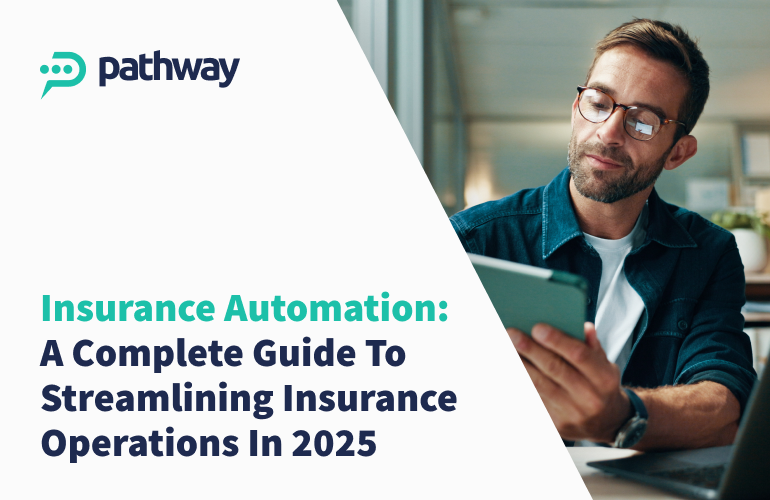
Table of content:
- Introduction: Why Insurance Automation Matters Now
- What Is Insurance Automation?
- Top Benefits of Insurance Automation
- Key Areas to Automate in Insurance
- Integration That Just Works: Two-Way BMS/AMS Sync
- What Makes PathwayPort Different
- How to Get Started with Insurance Automation
- Real-World Use Cases & Examples
- Frequently Asked Questions (FAQ)
- Conclusion: Start Automating. Stop Chasing.
Insurance automation is essential for meeting modern customer expectations and staying competitive. It eliminates time-consuming manual tasks, reduces operational costs, and ensures regulatory compliance. By automating processes like claims handling, policy renewals, and client communications, insurance agencies and brokerages can improve accuracy, scale efficiently without hiring, and deliver faster, more personalized service — all while freeing up their teams to focus on growth. Insurance automation is reshaping how the industry delivers service and scales operations.
What Is Insurance Automation?
Insurance automation refers to the use of technology-such as Robotic Process Automation (RPA), Artificial Intelligence (AI), and intelligent workflows-to automate repetitive, manual tasks across the insurance lifecycle.
It enables insurance brokerages, and agencies to:
- Streamline operations and reduce manual work
- Improve efficiency and lower the costs
- Digitize client interactions
- Improve speed, accuracy, and compliance
- Deliver a seamless personalized customer experience
- Scale without hiring
- Data driven decisions
Whether it’s automating policy renewals, claims handling, or client communication, insurance automation frees up your workforce to focus on strategic tasks-ultimately reducing costs and boosting competitiveness.
Integration That Just Works: Seamless Two-Way Sync with Leading AMS/BMS Platforms
PathwayPort enables seamless, two-way integration with major Broker Management Systems (BMS) and Agency Management Systems (AMS) across the USA, UK, and Canada-including platforms like Applied Epic, TAM, Power Broker, Acturis, SIG, and more. This sync ensures that your client, policy, and claims data remains accurate, up to date, and securely connected across all systems. Whether you’re syncing data from a CRM, updating client records, or automating policy workflows, PathwayPort writes back to your AMS/BMS with zero disruption. The result is complete data accuracy, faster operations, and consistent compliance, all without having to duplicate entries or switch between tools. Integration is quick and easy, with minimal IT involvement, so your team can start automating with confidence and security from day one. Plus, PathwayPort adheres to the highest data protection standards, including ISO 27001, to keep sensitive client information secure across every sync.

6 Key Areas of Insurance Automation
1. Lead Management & Nurturing
Automated systems can capture leads from websites, forms, or ads and then trigger personalized follow-up emails or SMS messages. Lead scoring, drip campaigns, and behavioral tracking help move prospects through the sales funnel efficiently.
2. Policy Renewals & Reminders
Automating renewal notifications ensures timely communication with clients, reducing policy lapses and improving retention. Emails or texts can be scheduled well in advance and customized based on policy type and client history.
3. Client Onboarding & Welcome Journeys
New clients can receive a series of automated welcome emails, policy details, FAQs, and next steps. This builds trust early and reduces the need for manual follow-up.
4. Cross-Selling & Upselling Opportunities
Based on current coverage, automated emails can suggest additional products or bundled packages (e.g., home + auto). These campaigns are data-driven and triggered by client profiles or behavior.
5. Claims Process Updates
Keep clients informed throughout the claims process with automated status updates, document requests, and satisfaction surveys. This improves transparency and client satisfaction.
6. Client Feedback & Engagement
Collect reviews, NPS scores, or satisfaction surveys automatically after key touchpoints (e.g., claim resolution or renewal). You can also automate re-engagement campaigns for inactive clients.
Benefits of Insurance Automation
| Benefit | Description |
|---|---|
| Increased Efficiency | Frees staff from time-consuming tasks like data entry or email dispatches |
| Reduced Operational Costs | Streamlines workflows and reduces rework caused by manual errors |
| Improved Accuracy | Automation ensures consistent and error-free processing |
| Enhanced Customer Experience | Faster service, proactive updates, and personalized interactions |
| Regulatory Compliance | Helps meet legal requirements through automated audit trails and reports |
| Competitive Advantage | Enables insurers to scale operations and offer innovative digital services |
What Difference PathwayPort is Bringing to Insurance Automation
The Renewal Assist Bot helps insurance agencies streamline their renewal process by automatically reviewing policies and identifying at-risk clients. By reducing policy backlogs and enabling timely outreach, it enhances customer retention while freeing up your team to focus on higher-value tasks. This proactive approach ensures no client falls through the cracks and improves overall efficiency in your renewal workflow.
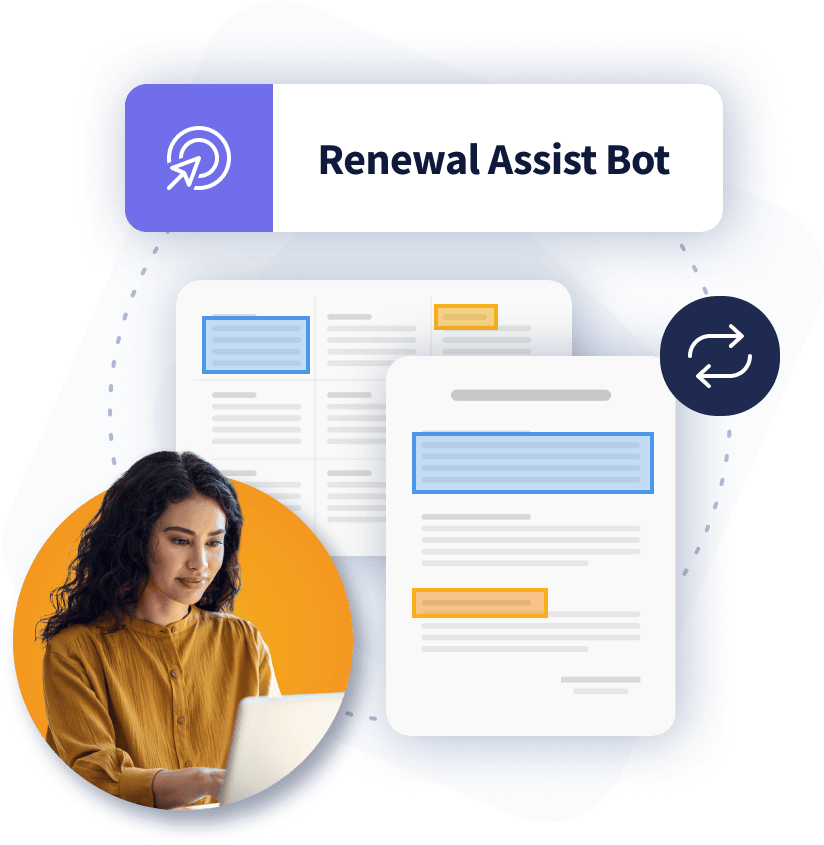
The Upload Assist Bot automates the time-consuming process of handling quotes and applications by extracting key information and transferring it directly to the carrier portal. It completes the Quote/Issue sequence and sets policy suspense for brokers, significantly reducing manual data entry. This not only maximizes operational efficiency but also minimizes errors and frees up your team to focus on client service and revenue-generating tasks.
The Loss History Bot automates the entire process of retrieving loss history and motor vehicle reports. It reads incoming request data, submits the necessary forms, assigns applicable charges, and imports the reports directly into your BMS. This streamlines underwriting by eliminating manual steps, accelerating decision-making, and ensuring fast, accurate access to critical data.
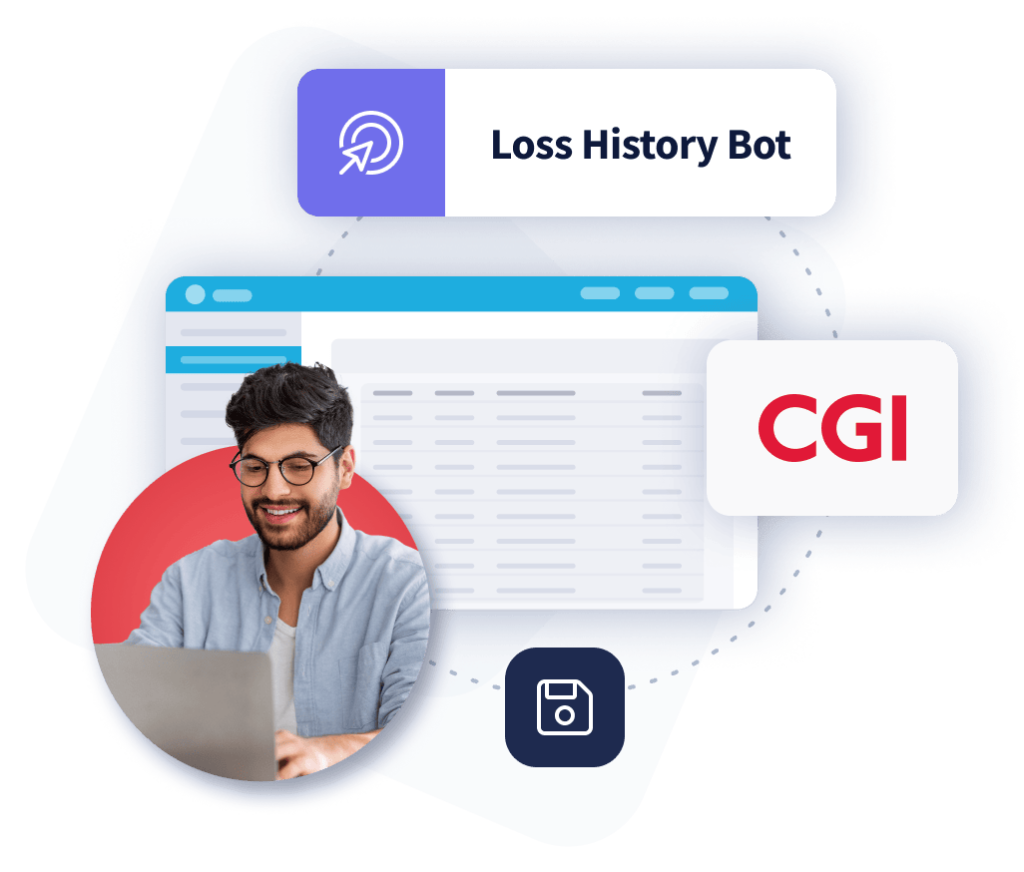
The Claims Sync Bot acts as your dedicated data reconciliation expert, automatically cross-referencing carrier claim reports with your BMS/AMS data to ensure accuracy and consistency. By eliminating manual checks and discrepancies, it streamlines claims management, saves valuable time, and enhances operational efficiency—so your team can focus on delivering a better claims experience.
3 Steps On How To Get Started With Insurance Automation
Implementing insurance automation doesn’t need to be overwhelming. The key is to start small, focus on high-impact areas, and choose the right technology that fits your business model. Here’s how to launch a successful automation journey:
1. Choose the Right Platform
Not all automation tools are created equal. Select a platform that’s built specifically for the insurance industry and offers deep integration with your Broker Management System (BMS) or Agency Management System (AMS). This ensures your automation works with your existing processes, not against them.
Look for platforms that:
- Seamlessly integrate with your BMS (e.g., Acturis, Applied Epic, TAM, Power Broker, SIG, AMS360, Vertafore, etc.)
- Offer two-way syncing to keep client data accurate
- Support both email and SMS automation
- Allow you to trigger workflows based on policy, claims, or client activity
- Have great customer support
🔄 Pro Tip: Choose a vendor that provides implementation support and offers prebuilt workflows/templates to speed up your rollout. You can find all of this and even more with PathwayPort.
2. Start with High-Impact Workflows
You don’t have to automate everything on Day 1. Focus on areas where your team is losing the most time or where customer experience is suffering due to delays.
Great places to start:
- Renewals: Automate reminders and policy updates.
- NPS Surveys: Collect feedback after touchpoints like claims or policy changes.
- Follow-Ups: Trigger emails or texts after quote requests or missed opportunities.
- Cross-Sell Campaigns: Automatically promote home insurance to auto-only clients.
- Document Delivery (eDelivery): Send policies, ID cards, or invoices automatically upon issuance.
🎯 Start simple, automate consistently. Once you prove value in one area, scaling is much easier.
3. Train Your Team
Technology alone won’t change your business-your team will. It’s crucial that everyone understands how automation supports their role and how it improves client interactions.
Key training steps:
- Identify automation “owners” or champions within your agency
- Train CSRs, producers, and managers on how workflows work
- Create SOPs (Standard Operating Procedures) for key automated tasks
- Use sandbox mode or demos to walk through workflows before going live
💬 Tip: Emphasize that automation eliminates repetitive work, not people-it enables your team to focus on higher-value relationships and strategy. Do not worry, PathwayPort’s customer support team is here to help you leverage insurance automation for your business.
4. Measure and Optimize:
Automation is only as valuable as the outcomes it produces. Set clear KPIs (Key Performance Indicators) from the start, and use built-in analytics to track progress and ROI.
What to track:
- Time saved per task or per team member
- Policy renewal rates before and after automation
- Client feedback and NPS scores
- Open, click, and response rates on emails/SMS
- Drop-off points in your client journey
Regularly review:
- Which workflows are underperforming?
- Where are clients disengaging?
- Which messages drive conversions?
📌 Keep optimizing. Automation is not a one-and-done effort, it’s a continuous process of refinement and improvement. Make data-driven decisions with comprehensive insight into email marketing statistics.
Bonus: Keep Security & Compliance Top of Mind
As you automate, make sure your platform supports data encryption, audit trails, and consent tracking. Platforms like PathwayPort are ISO 27001 certified and designed with insurance-specific compliance in mind.
Ready to take the first step?
Start with a 15-minute consultation to see how automation fits into your current workflows and where it can drive the fastest ROI.
👉 Book Your Free Automation Consultation

❓Frequently Asked Questions About Insurance Automation
1. What Is Insurance Automation?
Insurance automation is the use of technology, such as Robotic Process Automation (RPA), artificial intelligence (AI), and intelligent workflows, to eliminate repetitive tasks across the insurance lifecycle. It allows insurance agencies and brokerages to automate claims, renewals, underwriting, document delivery, and client communication with greater accuracy, speed, and efficiency.
2. Why Is Insurance Automation Important for Agencies and Brokerages Today?
Automation helps insurance professionals meet modern customer expectations for faster, more personalized service. It reduces administrative burden, lowers operational costs, improves data accuracy, and ensures compliance—all while enabling your team to focus on growth rather than manual tasks.
3. Which Insurance Tasks Can Be Automated?
Key areas that benefit from automation include:
- Claims processing and reconciliation
- Policy renewals and document delivery
- Client follow-ups and NPS surveys
- Underwriting data entry
- Fraud detection
- Compliance reporting
- BMS/AMS data syncing
- Cross-sell and upsell outreach, and more.
4. How Does Insurance Automation Improve Customer Experience?
Automation enables personalized communication, such as automated reminders, eDelivery of policies, and targeted follow-ups. It ensures customers receive consistent service with fewer delays, improving satisfaction, retention, and lifetime value.
5. What Systems Can PathwayPort Integrate With?
PathwayPort offers seamless, two-way syncing with major BMS/AMS platforms across the US, UK, and Canada, including:
- Applied Epic
- TAM
- Power Broker
- Acturis
- SIG
- And more
This ensures your data is always accurate, secure, and up to date across all connected systems. See which system PathwayPort integrates with.
6. What Are the Main Benefits of Automating My Insurance Processes?
- Increased Efficiency
- Reduced Operational Costs
- Improved Accuracy and Compliance
- Enhanced Customer Experience
- Scalable Growth Without Hiring
- Seamless BMS Integration
- Data-Driven Insights and Dashboards
7. How Can I Get Started with Insurance Automation?
Start with a platform built for insurance. PathwayPort makes onboarding simple:
- Choose prebuilt or custom workflows (e.g., renewals, surveys, delivery)
- Integrate with your BMS/AMS
- Train your team
- Track key metrics like time saved, retention, and engagement
👉 Book a free automation consultation to learn how to get started quickly and see fast ROI.
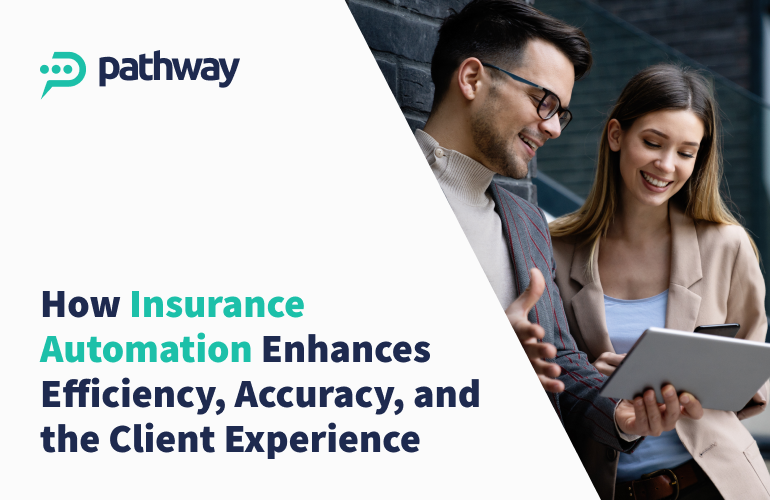
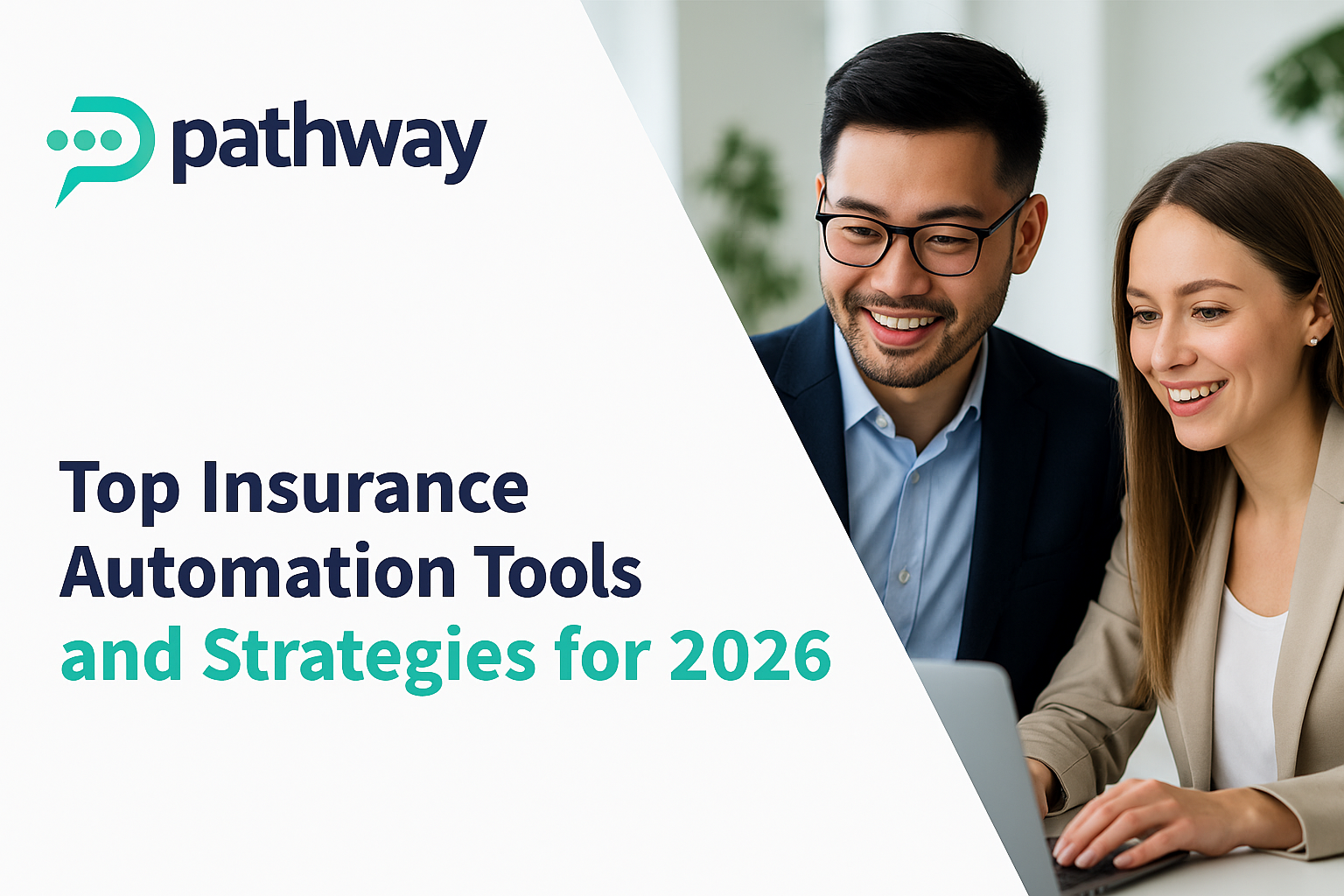
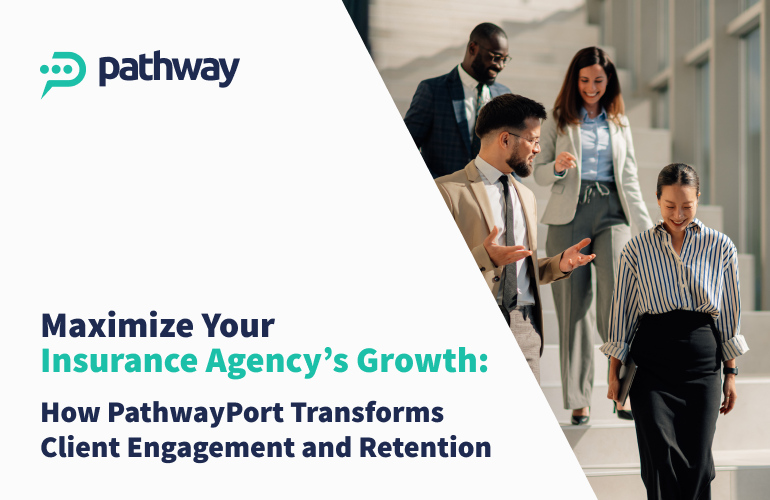


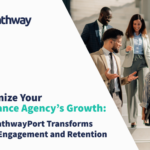
Leave a Comment